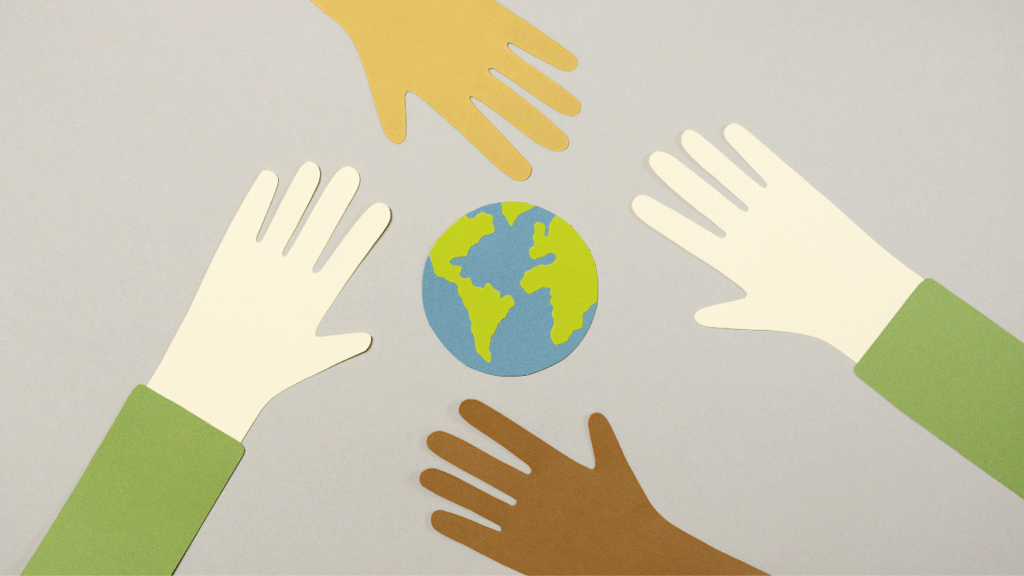The idea of P2P Community World might sound new, but it’s all about people helping each other through peer-to-peer (P2P) networks. These communities let folks share resources—files, skills, or even support—without needing a middleman. From file-sharing platforms like BitTorrent to local groups swapping goods, P2P is about connection and trust. In 2025, P2P communities are growing, driven by a desire for freedom, fairness, and community. This article dives into what P2P Community World means, how it works, and why it’s catching on. We’ll explore its benefits, challenges, and how you can join in, all in a clear, friendly way. Whether you’re curious about tech or just want to connect with others, P2P Community World has something for everyone.
What Is P2P Community World?
P2P Community World refers to global networks where people share directly with each other using peer-to-peer technology or ideas. Think of it as a digital or real-world space where you swap music, movies, knowledge, or services without a central company controlling things. Platforms like BitTorrent share files, while local P2P groups might trade tools or skills. These communities thrive on trust and equal participation—everyone gives and takes. In 2025, P2P is popular for its low costs and independence from big corporations. It’s not just tech; it’s a mindset of helping each other. But it comes with risks like legal issues or security concerns, so understanding how it works is key.
P2P Technology Basics
P2P technology lets devices—like your computer or phone—connect directly to share files or data. Instead of downloading from a central server, you get pieces of a file from others in the network. BitTorrent, for example, splits files across users, making downloads faster and cheaper. It’s efficient but can be risky if you’re sharing copyrighted stuff.
Real-World P2P Communities
Beyond tech, P2P happens in everyday life. Think of a neighborhood group where people lend tools or swap babysitting. These communities build trust and save money. In places like India, groups like P2P Community World on Facebook connect people for mutual support, sharing resources or advice without formal structures.
Why P2P Communities Are Growing
P2P communities are booming in 2025 because people want control over their resources. Big companies often charge high fees or track your data, so P2P offers a freer alternative. File-sharing platforms save money on streaming, while local groups help neighbors cut costs. The sense of community—where everyone helps out—feels good, too. Social media, like the P2P Community World page in Rajasthan, India, shows how people rally to support each other. But these networks face challenges, like legal battles over piracy or trust issues in unmonitored groups. Still, the desire for fairness and connection keeps P2P growing, especially as people seek affordable, independent ways to share.
Cost Savings
P2P cuts out middlemen, saving money. Instead of paying for Netflix, you might use BitTorrent for movies (though piracy’s illegal). In real-world groups, swapping goods—like books or clothes—means no cash spent. This is huge in places where budgets are tight, like rural areas or developing countries.
Building Trust and Connection
P2P communities rely on trust. Whether sharing files online or tools locally, you’re counting on others to give back. Groups like P2P Community World on Facebook encourage support, like helping with jobs or advice. This builds bonds, making people feel part of something bigger, unlike faceless corporate systems.
How P2P Community World Works
P2P Community World operates on the idea of equal exchange. In tech, platforms like BitTorrent let users share files directly—your computer sends and receives data from others. You download a movie in bits from multiple users, speeding things up. In real life, P2P groups work similarly: you lend a bike, someone else shares seeds. Online communities, like the one in Hanumangarh, Rajasthan, use platforms like Facebook to organize help or resources. Everyone chips in, and rules (formal or not) keep things fair. But without oversight, there’s a risk of scams or illegal sharing, so you need to be cautious and check local laws.
Online P2P Networks
Online, P2P networks use software to connect users. BitTorrent, for instance, breaks files into chunks, letting you download from many people at once. It’s fast and doesn’t rely on one server. But you might need a VPN to access blocked sites, and sharing copyrighted files can land you in trouble.
Offline P2P Sharing
Offline, P2P happens in communities where people trade goods or services. A group might organize a tool library or food swap. In Rajasthan, P2P Community World members might share job leads or household items. These setups rely on trust and clear rules to ensure everyone contributes fairly.
Benefits of Joining P2P Community World
Joining a P2P community brings practical perks. You save money by sharing instead of buying—think free movies or borrowed tools. It’s also empowering, giving you control over what you share or use, unlike corporate platforms. Communities foster connection, whether online or in person, creating a sense of belonging. For example, the P2P Community World group in Rajasthan helps locals support each other with advice or resources. Studies show P2P networks, like file-sharing, handle over 60% of internet traffic, proving their efficiency. But you get more than savings—it’s about building trust and helping others, which feels rewarding.
Financial Freedom
P2P cuts costs dramatically. Instead of paying for subscriptions or new items, you share what’s available. File-sharing saves on streaming fees, while local groups let you trade clothes or tools. In tight economies, like parts of India, this can make a big difference, freeing up cash for other needs.
Sense of Community
P2P builds strong bonds. Online, you’re helping others by seeding files. Offline, you’re swapping skills with neighbors. Groups like P2P Community World on Facebook create spaces for support, like sharing job tips. This mutual help feels good and strengthens ties, making you part of a bigger network.
Risks and Challenges
P2P Community World isn’t perfect. Online, sharing copyrighted files, like on BitTorrent, can lead to fines or jail time in places like India or the U.S. Sites are often blocked, needing VPNs to access. Security’s another issue—downloading files risks malware or data theft. Offline, trust can be tricky; someone might not return your tools or scam the group. Unclear rules in communities can lead to unfairness. Research shows P2P networks are targets for cyberattacks due to their open nature. Knowing these risks helps you stay safe, whether you’re sharing files or joining a local group.
Legal Risks
Using P2P for copyrighted content, like movies, is illegal in many countries. In India, piracy laws can mean hefty fines. Internet providers track activity, and even VPNs don’t make it legal. Check your local laws before joining online P2P networks to avoid trouble with authorities.
Security and Trust Issues
P2P file-sharing can expose your device to viruses from bad files or ads. Offline, lending items risks loss if someone doesn’t give back. Communities need clear rules to prevent scams. Using antivirus software and setting group guidelines, like in P2P Community World, can help reduce these risks.
Legal Alternatives to P2P File-Sharing
If you’re wary of P2P risks, legal options exist. For movies, platforms like Netflix or YouTube offer affordable streaming. Free services like Tubi or JioCinema (in India) have ad-supported content. For other resources, libraries or community centers often run legal sharing programs, like tool libraries. These avoid the legal and security headaches of P2P file-sharing. While they might cost a bit, they support creators and keep your data safe. In 2025, these platforms are adding more content, making them great alternatives to risky P2P networks.
Streaming Services
Netflix, Amazon Prime, and JioCinema offer movies and shows legally. They’re safer than P2P sites, with no malware risk. Subscriptions cost money, but free trials or ad-supported plans like JioCinema make them accessible. You’ll find 2023 hits like Pathaan without breaking the law.
Community Sharing Programs
Local libraries or groups often run legal sharing programs. Tool libraries let you borrow equipment, while book swaps save money. These are like offline P2P but without the risks. Check community boards or Facebook groups like P2P Community World for local options near you.
How to Join P2P Community World
Getting involved is easy. For online P2P, download software like BitTorrent and join a trusted network, but be cautious of legal issues. Use a VPN and antivirus for safety. For offline groups, search for local P2P communities on Facebook, like P2P Community World in Rajasthan, or check community boards. Start small—share a book or join a discussion. Set clear rules with others to ensure fairness. Whether online or in person, P2P is about giving and taking, so be ready to contribute to the group.
Starting with Online P2P
Download a P2P client like qBittorrent from its official site. Join a network by finding torrent links on trusted sites (avoid shady ones). Use a VPN like NordVPN to protect your privacy. Start with legal files, like open-source software, to avoid piracy issues while learning how it works.
Joining Local Groups
Look for P2P groups on Facebook or community apps like Nextdoor. In Rajasthan, P2P Community World connects people for sharing resources. Introduce yourself, offer something—like tools or skills—and follow group rules. Attend meetups or start small to build trust with members over time.
Resources for P2P Communities
Want to learn more? For online P2P, sites like the P2P Foundation (p2pfoundation.net) explain tech and trends. Forums like Reddit’s r/torrents offer tips, but focus on legal sharing. For offline groups, check Facebook for local pages like P2P Community World. Libraries or community centers often list sharing programs. Books like “The Sharing Economy” by Arun Sundararajan dive into P2P’s impact. These resources help you understand and join P2P safely and effectively.
Online P2P Resources
The P2P Foundation website has articles on file-sharing and community trends. Reddit’s r/P2P or r/torrents communities share advice, but stick to legal topics. YouTube tutorials explain how to set up P2P clients safely. These sources guide you through the tech side of P2P networks.
Local Community Resources
Search Facebook for groups like P2P Community World in your area. Community boards at libraries or cafes often list sharing groups. Apps like Nextdoor connect neighbors for swapping goods or services. Talking to members or attending events helps you find trusted, local P2P networks.
Final Thoughts
P2P Community World is all about sharing—whether it’s files online or tools with neighbors. It saves money, builds trust, and creates connections in a world full of corporate control. From BitTorrent to local groups like the one in Rajasthan, P2P empowers people to help each other. But watch out for legal and security risks, especially with file-sharing. Legal alternatives like Netflix or community libraries are safer bets. If you join a P2P group, start small, use precautions, and contribute fairly. Check out resources like the P2P Foundation or local meetups to dive in. P2P Community World is a chance to connect and share—jump in with care and make it work for you.



